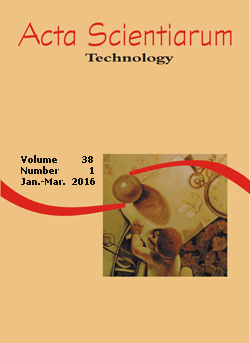<b>Stabilization of açaí (<i>Euterpe oleracea</i> Mart.) juice by the microfiltration process
DOI:
https://doi.org/10.4025/actascitechnol.v38i1.27037Keywords:
açaí, stabilization, membrane process, microfiltrationAbstract
Açaí berry, a Brazilian palm fruit widely distributed in northern South America, is acknowledged for its functional properties such as high antioxidant capacity and anti-inflammatory activities. Although the açaí juice is highly appreciated in Brazil and even worldwide, its commercialization is still limited. Microfiltration process is largely applied in juice processing, eliminating many of the traditional processing steps and reducing time, energy and addition of clarifying agents. Furthermore, microfiltration process may eliminate microorganisms and compounds responsible for turbidity in the juice. Current assay applies a microfiltration process to obtain a stabilized açaí permeate pulp. Microfiltrations of açaí pulp were carried out in a dead end configuration with a flat membrane of 0.22 μm pore size. Permeate pulp was characterized according to its turbidity, lipid concentration and microbiological analysis. Initial permeate flux was 103 kg m-2 h-1. After an initial flux decline during 30 min., due to membrane compaction and fouling occurrences, flux was stabilized at 20 kg m-2 h-1. The microfiltration process reduced the initial açaí pulp turbidity by 99.98% and lipids were not identified in the permeate. Microbiological analysis showed that the contamination by microorganism decreased in the permeate pulp when compared to that in raw açaí pulp.Downloads
Download data is not yet available.
Downloads
Published
2016-01-01
How to Cite
Caldeira Silva, F., Rossi, D. A., Cardoso, V. L., & Reis, M. H. M. (2016). <b>Stabilization of açaí (<i>Euterpe oleracea</i> Mart.) juice by the microfiltration process. Acta Scientiarum. Technology, 38(1), 7–11. https://doi.org/10.4025/actascitechnol.v38i1.27037
Issue
Section
Food Science and Technology
License
DECLARATION OF ORIGINALITY AND COPYRIGHTS
I Declare that current article is original and has not been submitted for publication, in part or in whole, to any other national or international journal.
The copyrights belong exclusively to the authors. Published content is licensed under Creative Commons Attribution 4.0 (CC BY 4.0) guidelines, which allows sharing (copy and distribution of the material in any medium or format) and adaptation (remix, transform, and build upon the material) for any purpose, even commercially, under the terms of attribution.
Read this link for further information on how to use CC BY 4.0 properly.











8.png)




